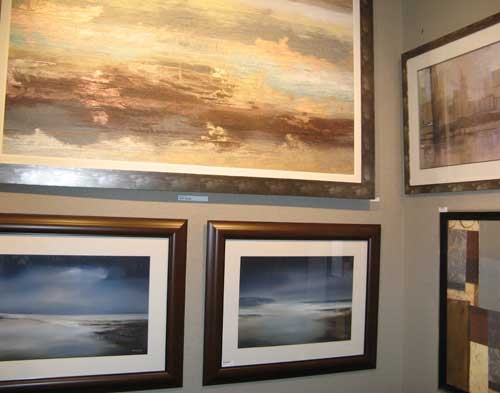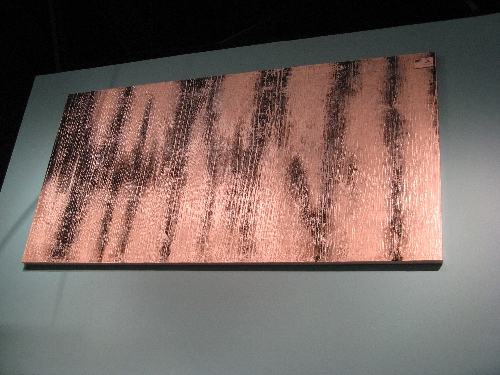Matter of the ART
Whether you prefer a modern Picasso, a classic Rembrandt or Coolidge's dogs playing poker, selecting art for your home is a purely personal matter.
"There is no right or wrong. Buy what you love," said Diana Tennyson-Nielsen, gallery director for New Century Picture Corp., which has a gallery/showroom at the Las Vegas Design Center. "Select a piece that makes you feel good, because, ultimately, that's what it is all about."
"Selecting art is unbelievably personal," agreed Jeanne Grace, manager of the Leftbank Art showroom at the design center. "It offers a sense of who you are.
"The beauty of art is that you can show 10 people the same piece of art and they can all see very different images within the piece," she said.
Regardless of the style of art or subject matter, it is a key element of a room's décor.
"Art can reflect the mood or feel of your room and pull the furniture and accessories together. It's the glue that pulls a room together," Tennyson-Nielsen said.
So, where do you start?
Grace said the first step is to establish where in your home you need wall décor.
"Then, I would take the measurements of those walls and try and determine the size of wall décor you are looking for, colors that work with the rest of your design theme, and what style appeals to you personally."
"Color should be complementary to that which is already in the room. While color doesn't always have to exactly match, it should not compete with the other colors in the room," said Stan Terry, president of New Century.
Tennyson-Nielsen offers an alternative approach. "Some pick their art last, and in some ways that's more difficult. It's like finding a needle in a haystack. If you start with art, you can pull your room's colors from there.
"Art is a good starting point. It gives you a theme, style and color," she said. "Artists are trained in color; they give you a palette to choose from."
Although people often match the style of their artwork with their furnishings, it's not necessary to pair traditional décor with traditional art.
"Sometimes it is nice to have an eclectic piece in your home or office. Artwork is very personal and, today, the trend is more toward 'cross merchandising' design themes," Grace said.
It's also OK to mix styles of art in the same room.
"Art can be themed and work very well. That is to say, a given room may be hung with all traditional artwork, or all contemporary. It can also be eclectic, with contemporary, transitional and traditional pieces thoughtfully combined to achieve a rich and exciting look. The most important thing is to like that which is selected, because it will be seen each and every day," Terry said.
Tennyson-Nielsen said if you are planning to mix styles of art, such as hanging a contemporary piece with something architectural or traditional, be sure they have the same colors.
She said you also can try to find similar patterns or geometrical shapes between pieces. As long as there are some common elements, you can mix up art styles in the same space.
When it comes to hanging art, the style of art does, in some way, affect how it will be displayed.
Grace said contemporary wall décor is generally hung just a few inches above furniture. That's because contemporary furniture tends to be lower and the art needs to be hung at a level where it can best be seen.
Another consideration is how the art is framed.
Tennyson-Nielsen said a traditional subject matter can become more transitional in nature when a clean-lined contemporary frame is used, and vice versa. Just be sure the frame doesn't overpower the art itself, Grace said.
Sometimes a frame isn't even necessary. All of the artwork at Leftbank is gallery canvas wrapped, meaning that the sides are finished.
"However, frames can definitely bring an image up to the next level, and can finish a piece off very nicely," Grace said.
And most importantly, be aware of your budget when you set out on your art-buying trip.
"As wall décor varies greatly in price range, it is good to define your comfortable budget range before you start shopping. This will save a lot of time and possible frustration," Grace said. "It's better to have a few pieces that are substantial versus getting a lot of pieces up. You can always add more later."























